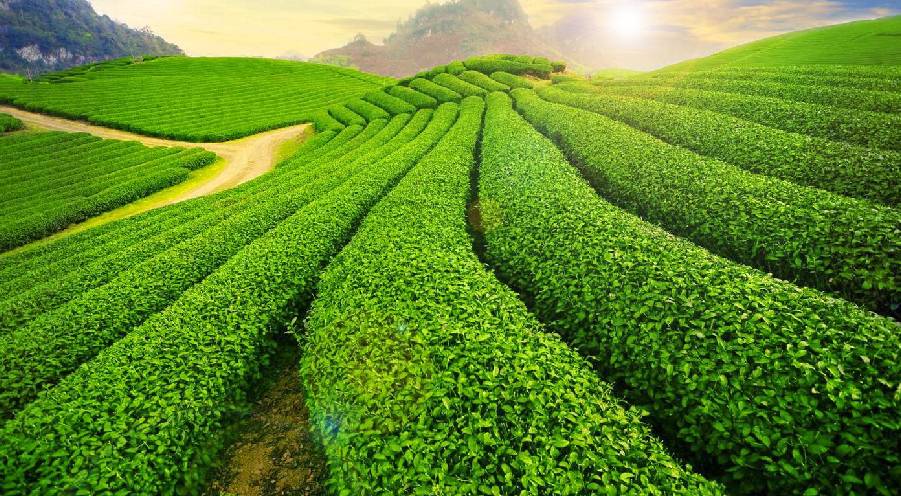Best Son La tourism alternatives to Moc Chau plateau
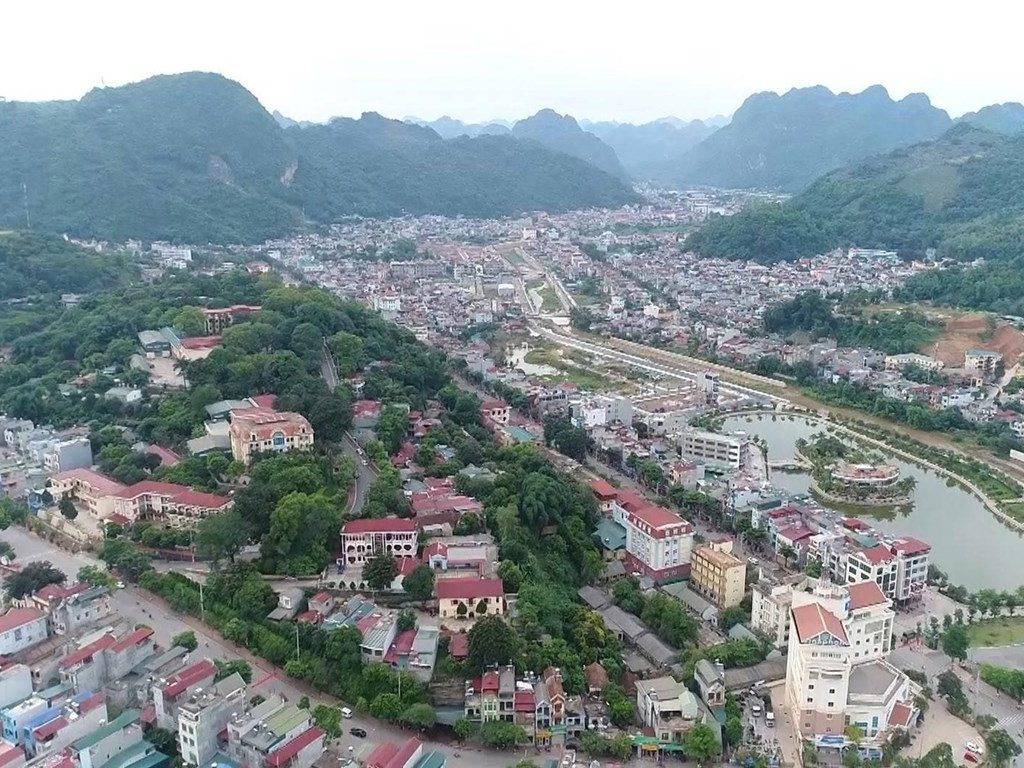
Over 300 km northwest of Hanoi, as the center of northwest provinces, Son La converges all typical beauty to represent the region; from thousands of iridescent golden terraces in Moc Chau, Dai Yem Waterfall gently flowing among green vegetation, to the peaceful fertile low-lying plains where the H’Mong and Thai people inhabit, and several mysterious caves created from calcification at Ngu Dong Ban On.
The list of Son La authentic natural attractions doesn’t just stop at the Moc Chau green tea hill and terraced fields, or the sights mentioned above. For those wanting to spend a colorful relaxing journey as well as those who will have a second trip back here, let’s explore more alluring untamed places in Son La below.
I. Transportation to Son La
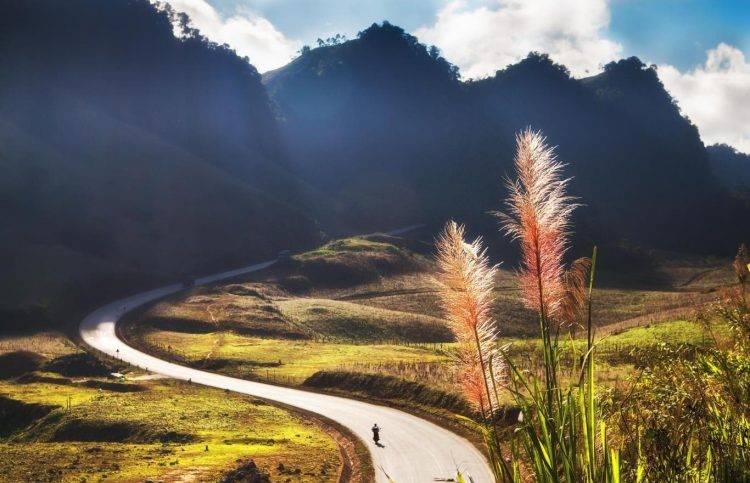
Currently, the fastest way to travel to Son La is moving to Hanoi first; then from there, choose either sleeping buses or motorbikes, to get to Son La.
You can catch a bus daily at Giap Bat Bus Station or My Dinh Bus Station from 7-8 pm, arriving in Son La within 6-7 hours for the price of 130,000 – 170,000 VND/person.
For those who travel by motorbikes, you can follow Thang Long Boulevard to the new highway to Hoa Binh City; then continue going on Highway 6 for about 120km to reach Moc Chau – Son La.
II. Where to stay in Son La
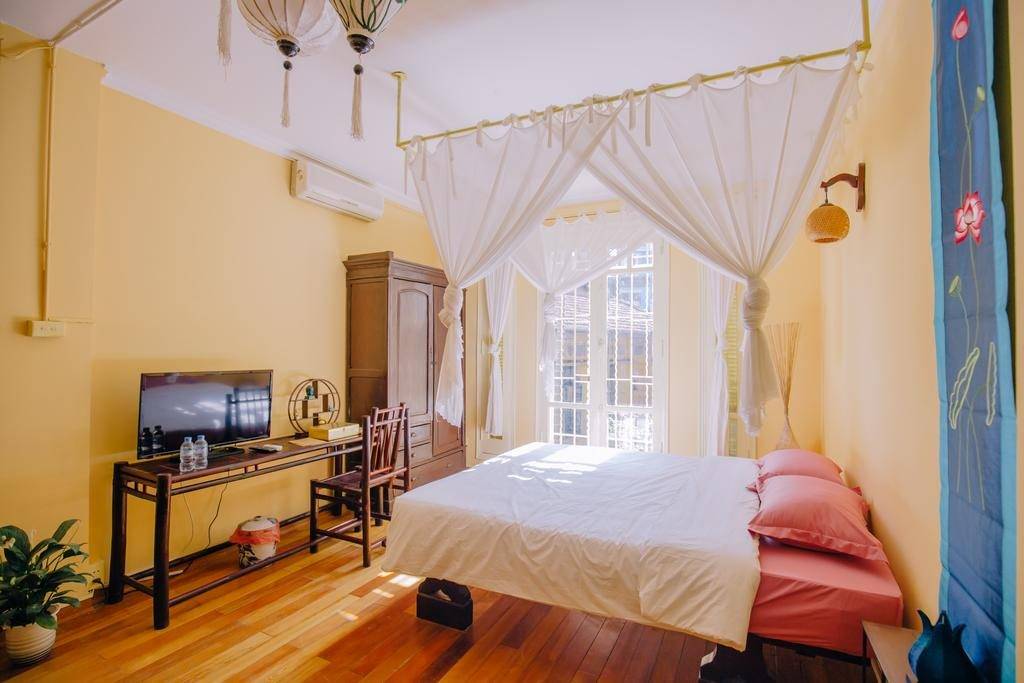
Most districts of Son La province have a hotel accommodation system, but the most diverse is still at the tourist attractions like Moc Chau, Ta Xua, and the main form is still budget hotels or motels with the prices ranging from 250,000 – 450,000 VND/night.
Suggestions:
Hanoi Hotel
Address: 228 Truong Chinh, Quyet Thang Ward, Son La
Hoang Son Hotel
Address: 69 Nguyen Luong Bang, Son La
In recent years, thanks to grasping the need to explore the local life of numerous tourists, forms of community-based tourism combined with homestay activities at an affordable cost (50,000 – 150,000 VND/night) have developed quite strongly, attracting more and more visitors.
Suggestions:
Homestay A Dua
Address: Hua Tat, Van Ho, Son La
Homestay A Chu Hua Tat
Address: Hua Tat, Van Ho, Moc Chau, Son La
III. Other attraction alternatives to Moc Chau in Son La
1. The lake in the middle of Da River
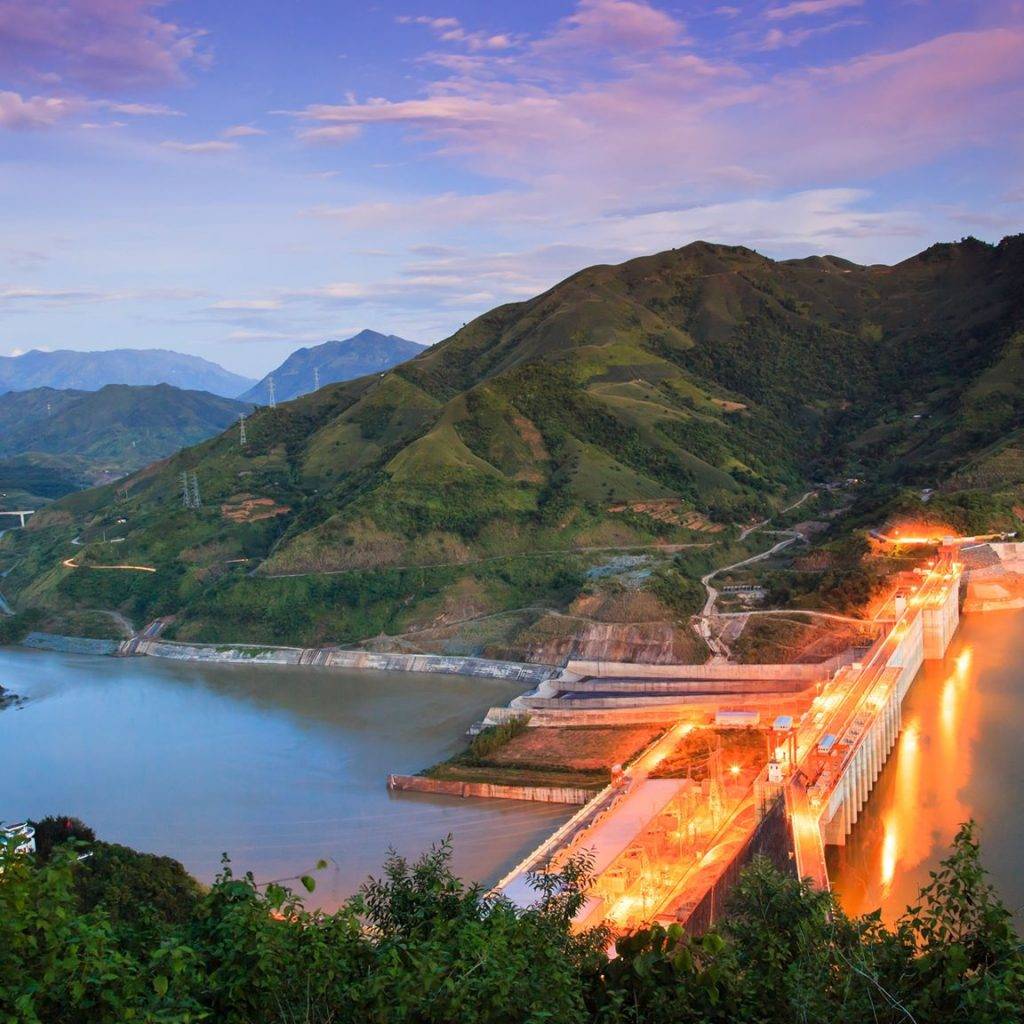
Da River flows through Son La province with a length of 280km with 32 large and small tributaries. In ancient times, the river has been a trade route between the Northwest ethnic groups and the lowland people. Upstream of Da River, following the way of merchant boats from Cho Bo, visitors will arrive at Van Yen wharf, Ta Hoc wharf, and Ta Bu wharf – also the starting point of Son La hydroelectric power.
The Son La hydroelectric power results in a large lake with a length of 175km and a capacity of 9.26 billion m3 of water in the beds of Da River. Since then, the rising waters of the reservoir have turned a great number of large and small hills into picturesque islands. To effortlessly visit this area, visitors can rent wooden boats with oarsmen at Quynh Nhai tourist wharf.
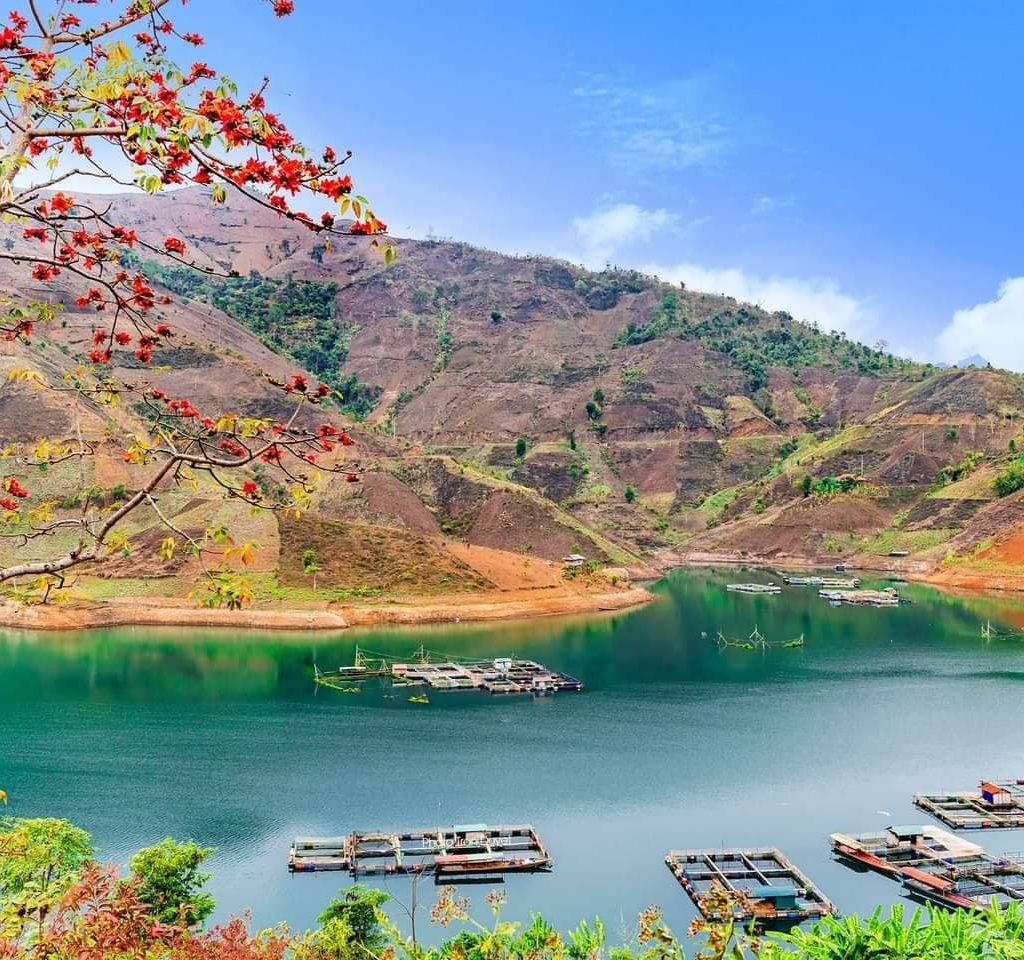
Sitting on the boat throughout the clear blue lake, travelers will admire a charming watercolor painting of stirring limestone mountains backdrops and vast blue sky silhouetted against the peaceful lake surface. After floating along the lake, visitors will stop at Heart Island, which is famous for its natural cat ear stone. This island originates from the rocky mountains – the result of creation from the migration for the hydroelectric dam.
Additionally, along the banks of Da River, visitors have a chance to discover the cultural life of ethnic groups: Thai, Muong, Kho Mu, La Ha, Xinh Mun, and Dao. It is easy to see them gathering in floating markets on the river, making the whole area more bustling and attractive.
2. Pa Phach Village
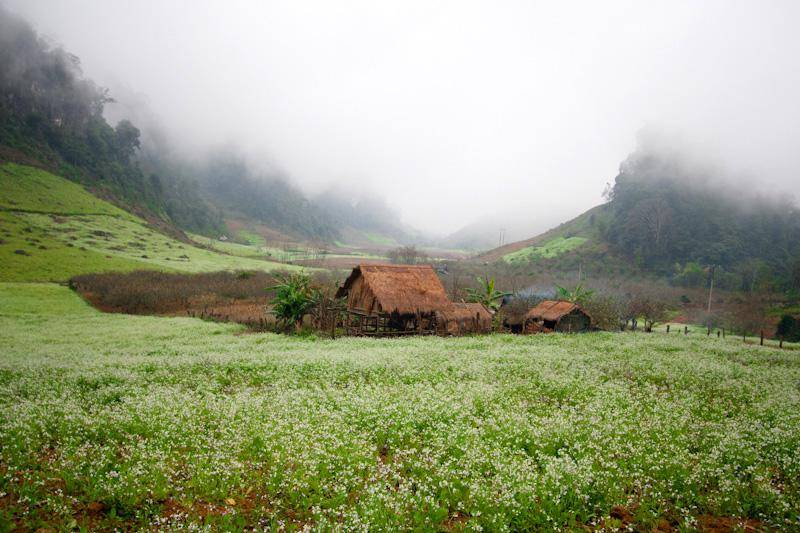
Pa Phach is a small village in Dong Sang commune, about 5km west from the junction of Moc Chau town to the west. The village is located on the mountain, sandwiched between two limestone mountains and lush primeval forests. The climate here is generally cool and fresh, and from late afternoon onwards, the place is mostly lost in a sea of dense mist.
Coming to Pa Phach Village, travelers only need to ride the motorbike in the direction to Moc Chau, when you see the sign of Moc Chau Tea Company, turn to the small road opposite, the flower fields connecting the mountains and forests will lead you straight to the destination. Since the location is in the middle of the valley and the roads are difficult, the village is almost isolated from the outside world. Perhaps that is why it still retains the original wild character although not far from the town.
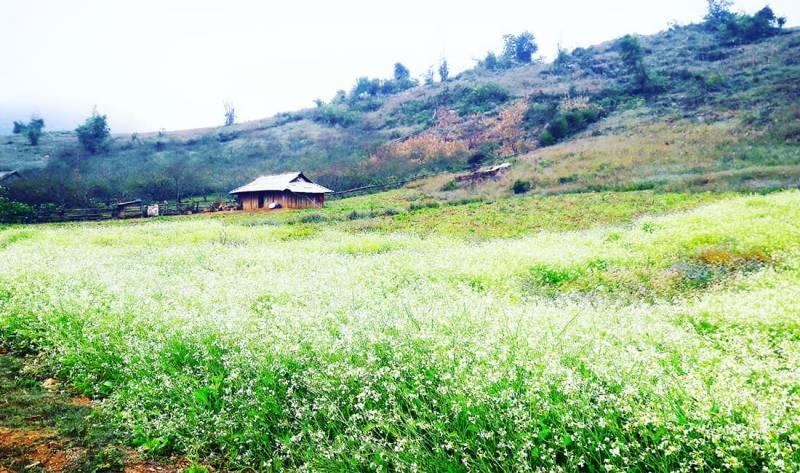
From the top of Pa Phach village, you can look down at the whole valley filled with greenery dotted with a few Hmong houses hidden among the trees. Glancing to the side, Moc Chau plateau appears spreading endlessly with green grass, cornfields, and a few herds of dairy cows leisurely grazing. It’s also not difficult to witness the daily life of locals; the children play carefree in the yard or ride old bicycles throughout the village, while adults work with their cows and buffaloes in idyllic farms.
Read more: Pu Luong – The largest natural reserve in the North
3. Xim Vang
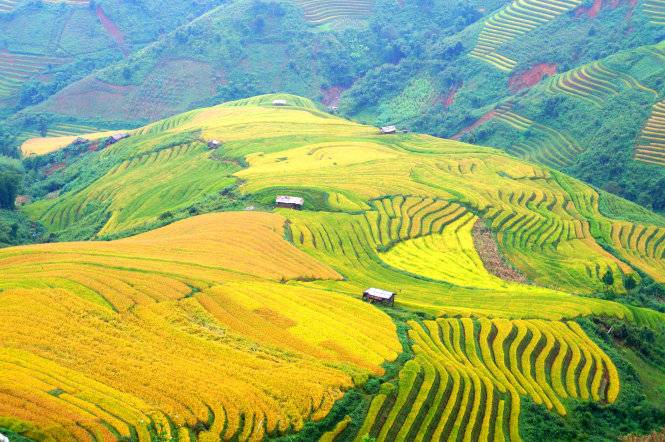
The road to Xim Vang commune is like a silk strip across the mountains, sometimes the mist dropping from the peak makes the landscape here more fanciful. Near the center of the commune, the terraced fields are winding like golden waves on the hillsides.
The most beautiful terraced fields of Xim Vang are in Hang Go Bua, Song Anti, and Cua Mang villages. Unlike the crowded rice terraces in Sa Pa, Y Ty, Hoang Su Phi, and Mu Cang Chai, Xim Vang is still quite peaceful even on weekends; occasionally, you only see a few Hmong women and their children herding goats and cows around.
The Mong here often builds small wooden and bamboo shacks on the slopes of terraced fields to shelter from the rain and sun while working.
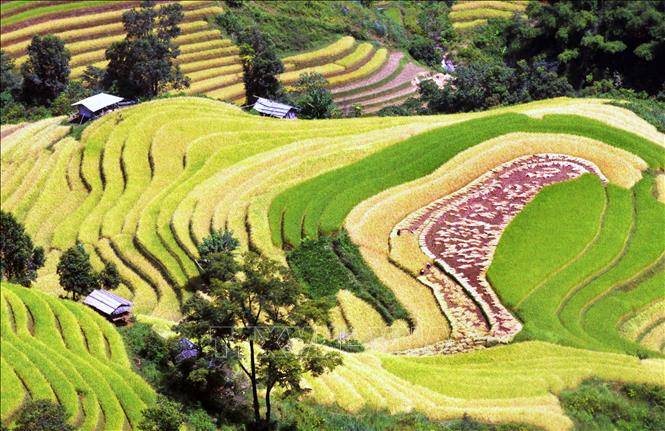
Leaving the terraces straight to Hang Chu, you may find several picturesque wild streams and waterfalls hidden in the wild jungle. The most special is Hang Nang Waterfall, which is like a majestic white silk strip. Further is the ancient stone rocks in Khe Ho area with 9 giant granite blocks scattered in the valley. On the stone, there are numerous carvings with unique shapes. These carvings represent the primitive worldview of the ancients about the universe, daily life, labor, production, or spirituality. Remember to bring food and water when going sightseeing during the day as there are almost no eateries here.
Read more: Lo Lo Chai, the fairy village among rocky mountain at Vietnam’s North Pole
4. Nang Tien Waterfall (Chieng Khoa Waterfall)
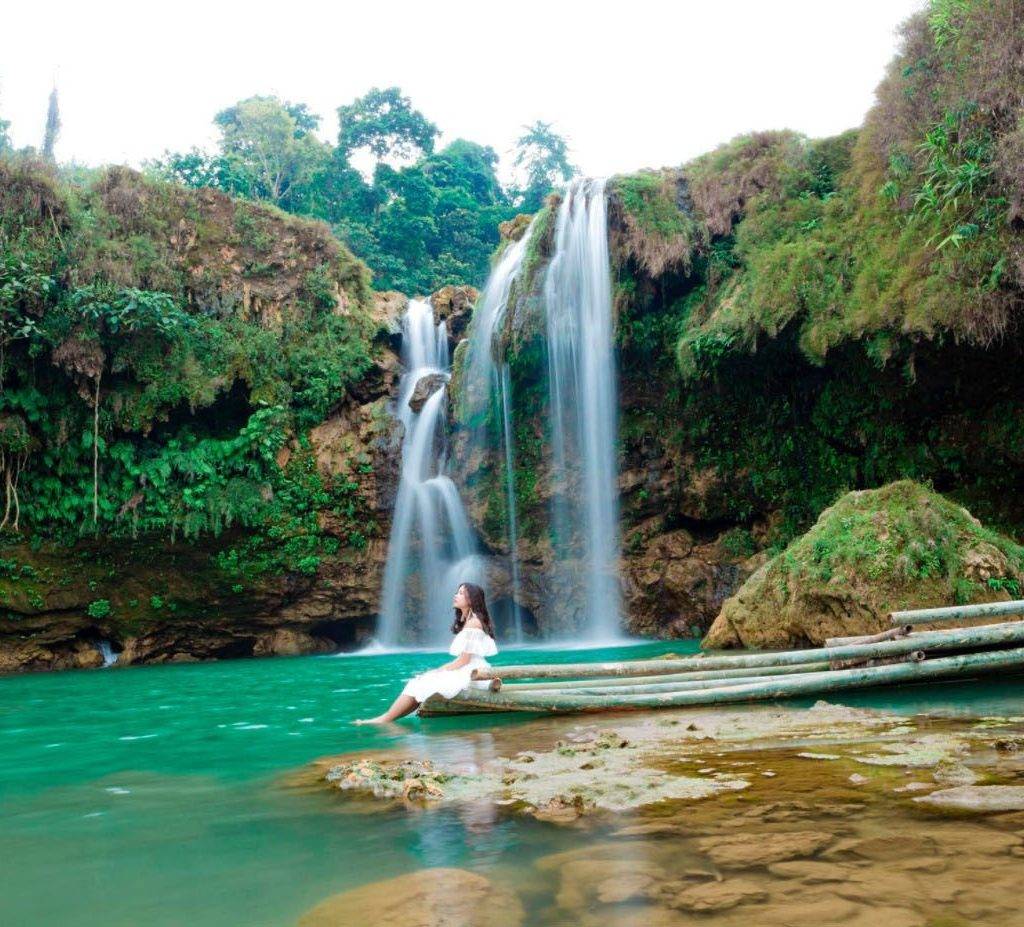
The waterfall is formed by the water source of Tan stream, confluence from the branch of Suoi Lin village, Van Ho commune and Suoi Khem village, Phieng Luong commune (Moc Chau). The most beautiful season to experience Nang Tien Waterfall is from March to May when the season changes from spring to summer. With occasional light rains, the jade water blends with the green vegetation around, creating a wonderful scene. This place is also a hydroelectric project built by Japan, so the way down to the waterfall is quite easier to walk than Dai Yem waterfall.
The topography of Nang Tien Waterfall is quite similar to the miniature Ban Gioc (Cao Bang) when there are clusters of waterfalls overlapping each other. The waterfall has three main cascades quite close to each other, stretching about 1.5km along the forest road. The first floor is only 100m from the parking lot, the scenery here is poetic with a clear lake safe for swimming. Meanwhile, to get to the second floor, visitors have to go upstream through a cliff with a solid bamboo bridge. The third cascade is the highest and most dangerous with a large rock surface immensely covered with thin layers of moss, so, pay careful attention or you will easily slip.
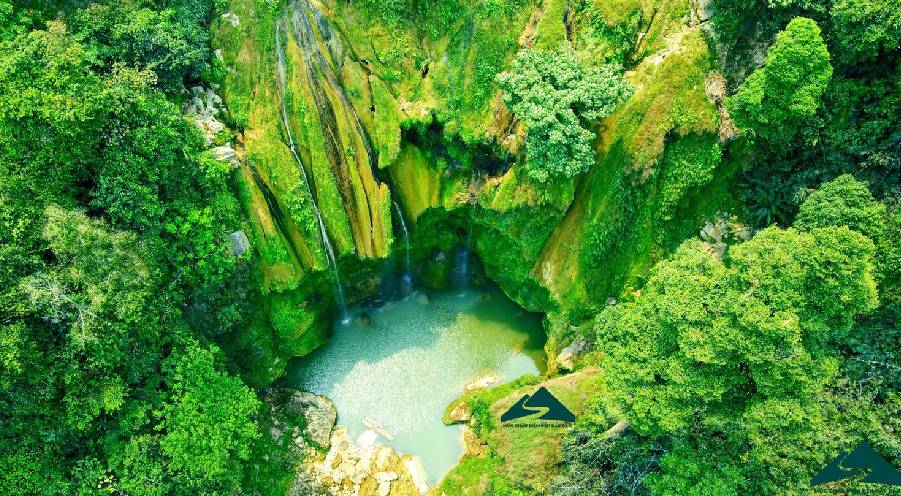
One thing to note is your own safety. Be very careful when swimming in waterfalls because reefs, slippery crushed rocks, whirlpools, or fast currents are things you don’t usually expect. Moreover, after coming to the waterfall, rest a bit for your muscles to relax after a walk up an extremely steep ladder. In addition, it is very important to maintain general hygiene to protect the natural beauty of the landscape here, try to leave only footprints but nothing else.
Read more: Sin Suoi Ho – The “stream of gold” village at Son Bac May Mountain
